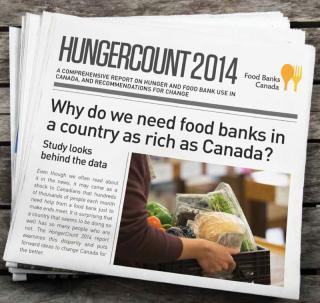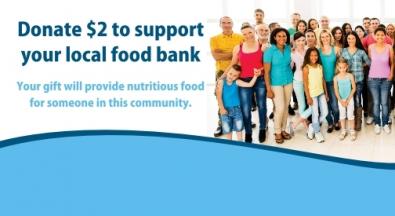HungerCount 2014 Report
Why do we need food banks in a country as rich as Canada?
Many people do not realize the extent of hunger’s reach in this country. This year it is expected that 841,191 Canadians will turn to food banks each month, just to make ends meet. That is up slightly from a year earlier.
The problem of hunger is a persistent one, with food banks providing comparable levels of food and other assistance for the better part of a decade.
Who is turning to food banks? There is no single, typical profile. The people helped include families with children, employed people whose wages are not sufficient to cover basic living essentials, individuals on social assistance, and Canadians living on a fixed income, including people with disabilities and seniors.
HungerCount 2014 uncovers the hard data on food bank use in Canada, tells the story behind the numbers, and digs deep to explore the root causes of hunger in our country.
Read the entire document: ![]() Download HungerCount2014.pdf (23.64 MB)
Download HungerCount2014.pdf (23.64 MB)
In 2014, food bank usage in Canada increased by about 1% over last year and the number of people utilizing food banks remains 25% higher than in 2008.
Alberta By The Numbers:
- 49,766 people helped by a food bank in March, 2014 – up about 2% from a year ago.
- The number of people helped during a month in 2008 was 33,580.
- Nearly half of the people helped at food banks are children – 42.9%. This number is virtually unchanged six years.
- The number of food banks in Alberta reporting an increase in usage in 2014 was 48.7%
At the height of food bank use in 2010, as many as 59,311 people turned to food banks for help
Consider these national figures from HungerCount2014:
- 37% of those turning to food banks are children and youth
- 5.4% of adults helped are over age 65
- 14% of people assisted are Aboriginal
- 48% of households helped receive social assistance
- 12% have income from current or recent employment
- Food bank usage increased in six of the 10 provinces this year
Food Banks Canada collects data from 3,000 food-related organizations across Canada each year and compiles the annual HungerCount report. This year, the report offers five areas for action to significantly reduce the need for food banks in Canada. They are:
- Invest in affordable housing at the federal level.
- Address the extremely high levels of food insecurity in Canada’s North.
- Replace the stigmatizing and ineffective social assistance bureaucracy at the provincial level with a basic income administered through the tax system.
- Provide more effective support to low income families with children by replacing the current alphabet soup of federal child benefits with a strengthened Child Well-Being Benefit.
- Help Canadians with low levels of literacy to upgrade their skills for the jobs of today.
- Add comment
About the Author
Upcoming
Sorry, there are no posts at this time.


